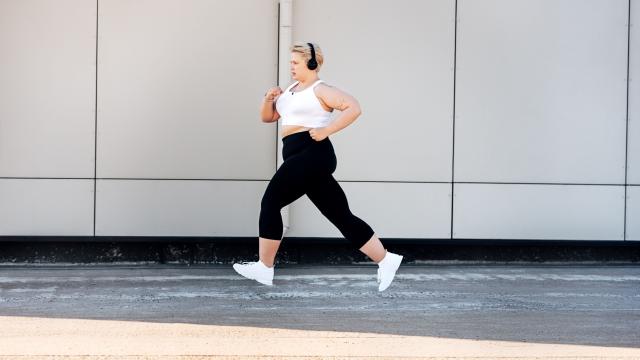This morning, I went for my first run in a while. Just a few minutes in, my legs were uncontrollably itchy. And that’s when I remembered: oh, yeah. This happens. If you’ve experienced it too, don’t worry: It’s surprisingly common to have itchy legs, or to itch all over, when running. Fortunately the itching tends to go away over time.
The itching we’re talking about today is a generalized overall itch (not hives, and not a rash in a specific spot) and tends to be worse if you’re new to running or coming back to it after a break.
Where “runner’s itch” comes from
This isn’t going to sound very satisfying, but there’s no clear, scientific answer to why running can cause you to itch. The leading theories include:
- Blood vessels widen to bring more blood to your muscles to fuel them, and to your skin to help regulate your temperature. This might be what causes the itching or tingling sensation. Over time, either your blood vessels get better at expanding when needed, or you just get desensitized to the feeling of it.
- Histamine is released during exercise, especially at higher intensities. Your body may do this to help dilate those blood vessels, or to help keep you alert. But histamine is also involved in our response to allergies, and may be causing the itching as a side effect.
- Vibration seems to trigger itching, as seen in studies done with whole-body vibration plates. The impact of running can cause your skin to jiggle with each step, and may be triggering a similar effect.
- Skin irritation due to your clothing or to substances (like a new detergent), or due to dry skin or other skin conditions.
The vibration theory feels the most correct to me, on a gut level: The itching subsides within a few minutes of switching from a run to a walk, even if I’m power-walking up a hill and my heart rate stays the same. But I’ll leave this question to the scientists. What matters to runners is figuring out what to do about it.
More serious reasons you might itch
If your itching occurs in the form of raised bumps, or if you get symptoms of anaphylaxis like a swollen tongue or trouble breathing, that’s different from what I was describing above. If you have trouble breathing or think you might be having a serious allergic reaction, stop reading this article and go call 911. Life-threatening anaphylaxis has been known to occur from exercise.
Hives, also known as urticaria, can occur during exercise as well. This is known as exercise-induced urticaria. You can also get a different condition called cholinergic urticaria from heat or stress, in addition to exercise.
Strategies that may help prevent or reduce the itching
Plenty of runners have experienced this itching, and have gone on to run happily despite it. They’ll tell you the itching doesn’t happen every time, and that when your body gets used to your new running habit, the itching tends to go away.
That’s been my experience as well. The first week or two that I return after a break, my body comes up with all kinds of ways to feel weird or bad or wrong. My skin may itch; my shins may ache. I remind myself that this isn’t how it will feel forever, just how it feels today. Here are some things that can help:
- Take extra time to warm up. This can mean walking for the first five minutes or so, before you start to run. If you like to do warmup exercises, like air squats or high-knees running in place, you can add those in as well. Some runners find this helps to reduce the itching.
- Hydrate well. Maybe it helps with the blood vessel dilation, or maybe you’ll just be well-hydrated while you itch. Either way, it doesn’t hurt to make sure you’re drinking appropriately, especially if you’re heading out for a long and/or hot run.
- Slow to a walk. When you’re getting back into the habit of running, your priority is not how fast you go, or how much you run versus walk. Your goal is building that habit. Walk until the itching subsides, then decide if you feel ready to run a little more.
- Minimize skin irritation. Moisturize. Wear soft, comfortable clothes. Don’t try out a new laundry detergent just yet.
On today’s run, I stuck with the “slow to a walk” strategy. My lungs and legs felt fine to continue running, but the itching was driving me nuts. I reminded myself that the most important thing was to finish my run (okay, my walk/run) feeling good enough that I look forward to the next time.
In total, I ran less than half my planned distance, and that was already a short route. But I know that next time I’ll probably itch a little less. And pretty soon, I’ll forget that this was ever a problem at all.

Leave a Reply
You must be logged in to post a comment.